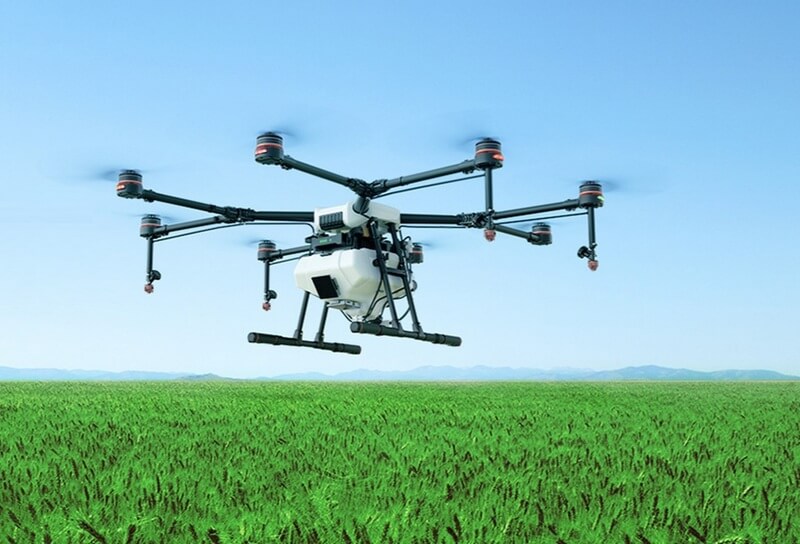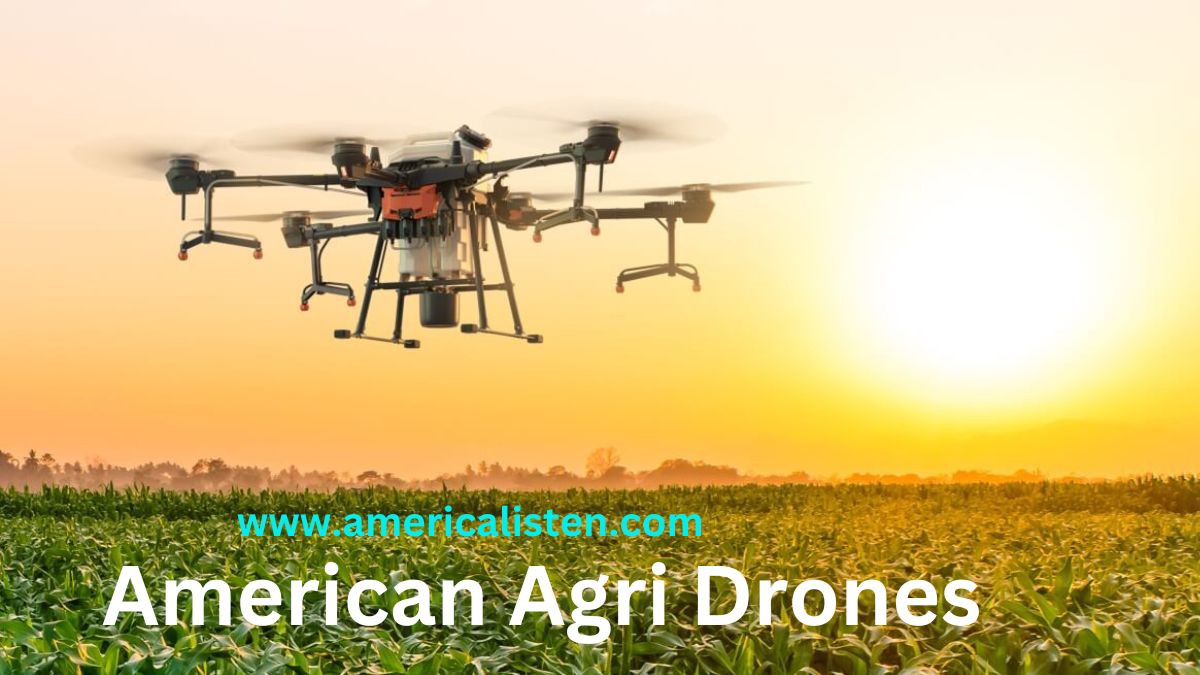In the ever-evolving landscape of agriculture, technology has become a crucial ally, revolutionizing traditional practices and paving the way for increased efficiency and sustainability. One of the most groundbreaking innovations in recent years has been the integration of drone technology. In the United States, drones are rapidly transforming the agricultural sector, offering farmers unprecedented capabilities for monitoring, analysis, and precision farming.
1. The Rise of Agricultural Drones:
1.1 Evolution of Drone Technology
Over the past decade, the United States has witnessed a significant evolution in drone technology. Originally developed for military and recreational purposes, drones quickly found application in agriculture due to their ability to provide real-time data and imagery.

1.2 Types of Agricultural Drones
There are various types of agricultural drones, each designed for specific purposes. Fixed-wing drones cover large areas efficiently, while multi-rotor drones offer versatility and precision in smaller fields. Hybrid drones combine the advantages of both, catering to the diverse needs of modern agriculture.
2. Key Applications in Agriculture:
2.1 Precision Farming
Drones equipped with advanced sensors and cameras enable farmers to monitor crop health with exceptional precision. High-resolution imagery and multispectral data empower farmers to identify issues such as nutrient deficiencies, pest infestations, or diseases, allowing for targeted interventions.
2.2 Crop Monitoring and Management
Drones play a pivotal role in crop monitoring throughout the entire growing season. From planting to harvest, these aerial devices provide valuable insights into plant health, growth patterns, and potential yield estimates. This data aids farmers in making informed decisions regarding irrigation, fertilization, and pest control.
2.3 Irrigation Management
Drones equipped with thermal cameras can assess variations in soil moisture levels, allowing farmers to optimize irrigation schedules. This not only conserves water but also contributes to resource efficiency and sustainable farming practices.
3. Advantages of Drone Technology in Agriculture:
3.1 Time and Cost Efficiency
Drones significantly reduce the time and cost associated with traditional methods of field monitoring. With the ability to cover large areas quickly, farmers can assess the condition of their crops more frequently, enabling timely interventions and minimizing potential losses.
3.2 Data-Driven Decision Making
The wealth of data generated by agricultural drones provides farmers with a comprehensive understanding of their fields. This data-driven approach enhances decision-making processes, leading to more efficient resource allocation and improved overall farm management.
3.3 Increased Crop Yield and Quality
By identifying issues early in the crop cycle, farmers can implement targeted interventions, leading to increased crop yield and improved quality. Precision farming enabled by drone technology contributes to more sustainable agricultural practices.
4. Overcoming Challenges:
4.1 Regulatory Framework
While the adoption of drone technology in agriculture is on the rise, challenges remain, particularly in navigating complex regulatory frameworks. The Federal Aviation Administration (FAA) oversees drone operations, and farmers must adhere to guidelines to ensure safe and legal use.
4.2 Initial Investment and Training
The initial investment in drone technology and the associated training can be a barrier for some farmers. However, as the technology advances and becomes more mainstream, costs are expected to decrease, making it more accessible to a broader range of agricultural operations.
5. Future Prospects:
5.1 Technological Advancements
The future of drone technology in agriculture looks promising, with ongoing advancements in sensor technology, artificial intelligence, and machine learning. These developments will enhance the capabilities of agricultural drones, allowing for even more precise and sophisticated applications.
5.2 Integration with Other Technologies
The integration of drones with other emerging technologies, such as Internet of Things (IoT) devices and autonomous machinery, holds the potential to create a seamlessly connected agricultural ecosystem. This interconnected approach could further improve efficiency and automation in farming practices.
6. Conclusion:
In conclusion, the integration of drone technology into agriculture in the United States represents a transformative force with the potential to revolutionize how farmers manage their fields. From precision farming to data-driven decision-making, drones offer a range of applications that contribute to increased efficiency, sustainability, and overall productivity in the agricultural sector. As technology continues to advance, the future of agriculture in the USA is set to soar to new heights with the help of these aerial allies.
Introduction to Parrot Agriculture Drones:
In the ever-evolving realm of precision agriculture, where technology serves as a catalyst for innovation, Parrot has established itself as a leading player with a dedicated focus on the agricultural sector. Among its lineup, the Parrot Bluegrass Fields and Parrot Anafi USA stand out as formidable contributors to the transformation of modern farming practices.
Parrot Bluegrass Fields:
The Parrot Bluegrass Fields is a sophisticated agricultural drone designed to meet the unique challenges of precision farming. Built on a robust quadcopter platform, the Bluegrass Fields integrates advanced imaging capabilities, enabling farmers to obtain actionable insights for optimal crop management. With a commitment to simplicity and effectiveness, this drone empowers farmers to monitor vast expanses of farmland with unparalleled efficiency.

Equipped with multispectral sensors, the Bluegrass Fields captures high-resolution imagery across multiple spectral bands, revealing crucial details about crop health, nutrient levels, and potential stress factors. This wealth of data aids farmers in making informed decisions, from targeted interventions to optimized resource allocation, ultimately enhancing overall crop yield and quality.
Parrot Anafi USA:
The Parrot Anafi USA, another jewel in Parrot’s agricultural drone portfolio, takes the capabilities of unmanned aerial systems to new heights. Tailored for professional applications, including agriculture, the Anafi USA is characterized by its rugged design, versatility, and state-of-the-art imaging technologies.
What sets the Anafi USA apart is its ability to capture high-resolution visual and thermal imagery with remarkable precision. This drone is equipped with a 32x zoom camera, allowing farmers to scrutinize crops, identify potential issues, and monitor the landscape with unprecedented detail. Furthermore, the inclusion of thermal imaging capabilities extends its utility beyond daylight hours, providing a comprehensive view of the agricultural terrain.
Both the Parrot Bluegrass Fields and Parrot Anafi USA exemplify Parrot’s commitment to merging cutting-edge drone technology with the specific needs of modern agriculture. As farmers increasingly turn to data-driven approaches for crop management, these drones serve as indispensable tools, ushering in a new era of efficiency, sustainability, and productivity in the agricultural landscape.
Parrot Bluegrass Fields: Characteristics
1. Robust Quadcopter Design:
– The Parrot Bluegrass Fields features a sturdy and reliable quadcopter design, providing stability and maneuverability essential for navigating agricultural landscapes.
2. Multispectral Imaging Capabilities:
– Equipped with advanced multispectral sensors, the drone captures high-resolution imagery across various spectral bands. This feature allows farmers to gain detailed insights into crop health, identify stress factors, and assess nutrient levels.
3. Efficient Field Coverage:
– Designed with efficiency in mind, the Bluegrass Fields covers extensive areas of farmland in a single flight, reducing the time and effort required for monitoring large expanses of crops.
4. Ease of Use:
– Parrot prioritizes user-friendly interfaces, making the Bluegrass Fields accessible to farmers with varying levels of technical expertise. The intuitive controls and streamlined operation enhance its usability in diverse agricultural settings.
5. Actionable Data Analysis:
– The drone provides farmers with actionable data for informed decision-making. By analyzing the collected imagery, users can implement targeted interventions, optimize resource allocation, and enhance overall crop management practices.
6. Real-time Monitoring:
– Offering real-time monitoring capabilities, the Bluegrass Fields allows farmers to make immediate assessments of crop conditions. This feature is particularly valuable for responding promptly to emerging issues and implementing timely interventions.
Parrot Anafi USA: Characteristics
1. Rugged and Versatile Design:
– The Parrot Anafi USA boasts a rugged design, making it well-suited for professional applications, including agriculture. Its robust construction ensures durability in diverse environmental conditions.
2. High-Resolution Visual and Thermal Imaging:
– Featuring a 32x zoom camera, the drone captures high-resolution visual imagery, allowing farmers to closely inspect crops and terrain. Additionally, thermal imaging capabilities extend its utility beyond daylight, providing comprehensive monitoring capabilities.
3. Versatile Zoom Capabilities:
– With a 32x zoom, the Anafi USA enables users to zoom in on specific areas of interest, offering detailed insights into crop health and potential issues. This versatility enhances its suitability for precise monitoring and analysis.
4. Extended Operational Hours:
– The inclusion of thermal imaging technology allows the Anafi USA to operate effectively during low-light conditions. This feature extends operational hours, providing farmers with continuous monitoring capabilities.
5. Secure Data Management:
– Parrot prioritizes data security, ensuring that the information collected by the Anafi USA is handled with utmost confidentiality. This characteristic is vital for protecting sensitive agricultural data and ensuring the privacy of farmers.
6. Portability and Quick Deployment:
– The drone’s compact design and quick deployment capabilities make it a practical tool for time-sensitive agricultural tasks. Its portability enhances its adaptability to various farming scenarios and environments.
In summary, both the Parrot Bluegrass Fields and Parrot Anafi USA embody characteristics that align with the specific needs of modern agriculture, offering farmers advanced tools for efficient, data-driven, and sustainable crop management.


